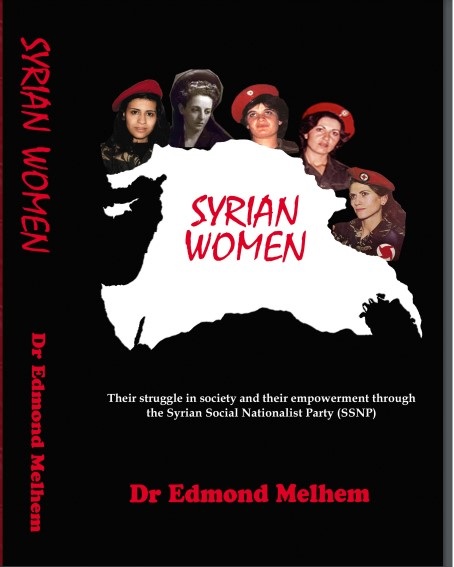Was Antun Sa’adeh concerned with the women's
question? Did he fight against the discrimination of women? Did he promote
their emancipation? And to what extent has his ideology contributed to social
and cultural transformations in women's lives? To answer these questions, we
must examine what occupied Sa’adeh throughout his career. Certainly, if the
women's question did concern him, it was not his primary focus. His main
preoccupation was the revival of the entire Syrian nation. Therefore, to
understand his stance on women, we must consider his national project as a
whole and his objectives for his nation. In light of this broader
understanding, we can better assess his position on women's issues.
Born in 1904, Antun Sa’adeh grew up in a highly
cultured family in a village with an active intellectual life and a relatively
well-educated population. Influenced by his immediate social milieu and the
political circumstances of the time, particularly the devastation of World War
I, Sa’adeh sought internal solutions to the social, cultural, and political
ills he perceived in his society. He believed the main issue in his fragmented
country was the loss and confusion of national identity, coupled with the absence
of political unity, aspirations for political strength, and the pursuit of a
better life.
Sa’adeh aimed to achieve national integration and
guide his society toward a just, good, and beautiful life. He stated, “We are
not like those who direct their attention to the beyond existence. Rather, we
are like those who aspire by their nature to achieve a beautiful and
sublime existence in this life and to ensure the continuity of this life as
beautiful and sublime.” [1] He sought to
accomplish this by elevating his people to higher levels of morality and
instilling values such as liberty, justice, righteousness, goodness, duty,
responsibility, and equality. Sa’adeh aspired to create a new society free from exploitation and oppression. However, this vision was challenging
to achieve in a society deeply divided by social cleavages, problems, and
psychological barriers. The Syrians were socially disintegrated, split into
quarreling groups and factions with allegiances to a multiplicity of racial,
sectarian, and tribal identities. Their social life was based either on
religious sectarianism or tribal organization, characterized by stagnation,
institutional deficiency, and national debilitation. Sa’adeh stated:
National debilitation was general to the extent that
it came close to irreducibly destroying the nation’s personality. All that was
left to the nation were a few institutions such as religious authority, places
of worship, feudal order, the extended
clan system, or the blood-tie of families.[2]
The situation seemed irremediable when considering
the existing maladies, such as sectarianism, tribalism, feudalism, communal
disharmony and distrust, corruption, exploitation, discrimination, fear, and
submission, to name a few. Sa’adeh’s solution was straightforward: to replace
the existing order with a new secular system led by a national party free from
discrimination. Adel Beshara illustrates this solution:
The plan was simple enough: to take on the might of
the existing order through a ‘Party’ of devoted, dedicated, selfless, even Puritan
men and women, united in a common cause. It was no easy task by any stretch of
the imagination, but the power of Sa´adeh's thought, his single-mindedness of
purpose, and the trenchancy of his analyses carried the day through. The idea
grew into a vision, the vision into a party, and the party into a living organ.
Not a lifeless dogma, but a vision for action. After that, there was no turning
back. Everything else was now trifles, hypocrisy, and “parson’s talk”. The
victory was the only commandment to observe.[3]
[1]Antun Sa´adeh, Al-Muhadarat
al-’Ashr (The Ten Lectures), Beirut: SSNP, 1976, p. 107.
[2] Antun Sa´adeh, Awwal Adhar (First
of March Speechs), Beirut: SSNP Publications, 1952, p. 20.
[3] Adel Beshara, “Will the Real Antun Sa´adeh Please Step
Forward!”, in Al-Mashriq, Vol 10, No 37, June 2011,
pp.
78 – 79.

